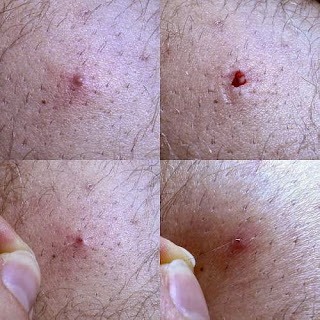What is nevus lipomatosus cutaneous superficialis?
Nevus lipomatosus cutaneous superficialis (NLCS) is a rare idiopathic benign hamartoma characterized by deposits of mature adipose tissue in the dermis.
The nevus lipomatosus superficialis is commonly present at birth, can appear later in life. It is classified into classical and solitary forms. The classical form is characterized by clusters of pedunculated, flesh-colored or yellowish papules, nodules, or plaques which may have a smooth, wrinkled or cerebriform surface. The other very rare form of NLCS manifests as a solitary dome-shaped or sessile papule.
The nevus lipomatosus cutaneous superficialis lesions are usually unilateral and may appear in linear or zosteriform cutaneous distribution. Multiple papules of various sizes may appear simultaneously.
Some rare coexistent anomalies
Ashish Dhamija et al. reported a rare case of classical NLCS in a 26-year-old man with bilateral cerebriform nodules over the perianal area. The patient reported occasional foul-smelling discharge from the nodules. The surface of the lesion had multiple open comedones. The patient also informed that the lesions also occurred 5 years earlier and were surgically removed. Brasanac and Boricic reported a case in which the lesion also contained dermoid cysts.Nevus lipomatosus superficialis causes
NLCS is a rare benign idiopathic hamartomatous condition. It is an ectopic presence of mature adipose tissue in the dermis layer of skin. The epidermis is usually normal. The reticular dermis has pockets of mature adipocytes. Nevus lipomatosus cutaneous superficialis with a 2p24 gene deletion has been recently reported.Nevus lipomatosus cutaneous superficialis signs and symptoms
The characteristics of these cutaneous lesions are:- single or multiple papules,
- slow-growing,
- asymptomatic course,
- flesh-colored or yellowish,
- coalescing,
- zosteriform, linear or segmental distribution,
- smooth or cerebriform surface,
- classic nevus lipomatosus cutaneous superficialis occurring on pelvic girdle, the lower trunk, the gluteal region or the thigh,
- solitary form occurring on the ear, scalp, eyelid or nose and
- not associated with skin disorders, systemic abnormalities or malignant transformation.
Nevus lipomatosus superficialis diagnosis
A general physical examination of these cutaneous lesion will present multiple, skin-colored, pedunculated, cerebriform, soft, asymptomatic nodules of varying sizes. Skin biopsy microscopy will show the presence of clusters of mature adipose tissue in the dermis, mostly around the perivascular area, interposed among the collagen bundles.Solitary nevus lipomatosus cutaneous superficialis may require to be differentiated from fibrolipoma, as histologically it appears similar to fibrolipoma. The differential diagnosis has to include, fibrolipoma, neurofibromatosis, nevus sebaceous, lymphangioma, neurofibroma and fibroepithelial polyp.
Nevus lipomatosus cutaneous superficialis treatment
Treatment is usually not necessary for NLCS. If there is cosmetic concern or if it is coming in the way of daily activities, surgical excision is done. Cryotherapy yields mixed results. There is a report of a case of successfully treated classic NLCS with CO2 laser. After surgery, recurrence of nevus lipomatosus cutaneous superficialis is very rare.Advertisements
|
References: 1.Ashish Dhamija, Ashok Meherda, Paschal D’Souza, Ram S. Meena. Nevus lipomatosus cutaneous superficialis: An unusual presentation. Indian Dermatol Online J. 2012 Sep-Dec; 3(3): 196–198. 2.Khandpur S, Nagpal SA, Chandra S, Sharma VK, Kaushal S, Safaya R. Giant nevus lipomatosus cutaneous superficialis. Indian J Dermatol Venereol Leprol. 2009;75:407–8. 3.Samia Goucha, Aida Khaled, Faten Zéglaoui, Soumeya Rammeh, Rachida Zermani, Bécima Fazaa. Nevus lipomatosus cutaneous superficialis: Report of eight cases. Dermatol Ther (Heidelb). 2011 Dec; 1(2): 25–30. |



